Heat Transfer Training Course by ANSYS Fluent
$240.00 Original price was: $240.00.$119.00Current price is: $119.00. Student Discount
The Heat Transfer Training Course includes:
- Introduction to the Heat Transfer Types
- Natural Convection Heat Transfer
- Forced Convection Heat Transfer
- Conjugated Heat Transfer (convection and conduction)
To Order Your Project or benefit from a CFD consultation, contact our experts via email ([email protected]), online support tab, or WhatsApp at +44 7443 197273.
There are some Free Products to check our service quality.
If you want the training video in another language instead of English, ask it via [email protected] after you buy the product.
Description
Heat Transfer Training Course Introduction
After passing this Heat Transfer Training Course, you are ready to claim yourself as a Heat Transfer CFD Simulation expert.
Heat transfer is a discipline of thermal engineering that concerns the generation use, thermal engineering that concerns the generation, use, conversion, and exchange of thermal energy between physical systems. The specific mechanisms are usually referred to as convection, thermal radiation, and conduction. Engineers also consider the transfer of mass of differing chemical species (mass transfer in the form of advection), either cold or hot, to achieve heat transfer. While these mechanisms have distinct characteristics, they often occur simultaneously in the same system.
ANSYS Fluent has powerful tools for simulating all three types of heat transfer.
What do you learn in this Combustion Training Course?
In this training course, you will thoroughly learn how to set up the needed settings for modeling the heat transfer process. Please note that in this course, we only study the simulation of natural convection, forced convection, and conduction.
This course is presented in a way that is as practical as possible so that the graduates can work well with this software to heat transfer phenomena after the end of the training course.
Heat Transfer Training Course Syllabus
This course contains 4 video lessons and a final project as an exam to get the Heat Transfer Certification.
This course is divided into 4 main lessons. You strongly recommend that you do not skip any of the sections even if you feel you know the content.
Lesson 1
In this lesson, you will first see a general introduction to heat transfer and an overview of available simulation techniques and models in ANSYS Fluent. This section contains the following subsections:
- Introduction and overview of the heat transfer types (Convection, Conduction, and Radiation)
- Definition of Newton’s Law of cooling
- Introduction of the Non-dimensional Numbers in Heat Transfer, including Grashof Number, Prandtl Number, Rayleigh Number, and Nusselt Number.
- Thermal Boundary Layer.
- Pressure Discretization Methods in Heat Transfer.
- Time Step Size in Heat Transfer.
- How to set up operating conditions.
- Introduction of the density functions in the material tab and how to use them.
Lesson 2
In this lesson, you will learn about Natural Convection modeling by performing a simple project by investigating a solar chimney. Also, In this example, conduction effects are not considered, but the shell conduction setting is introduced and explained.
- Introduction of Diffusion and Advection as two important phenomena
- How to choose turbulence model in heat transfer simulations.
- Introduction of the buoyancy force as the main force in natural convection.
- Thermal Boundary Layer.
- Explanation of the shell conduction and its setting in ANSYS Fluent software.
- Simulation of a solar chimney as an example of natural convection.
Lesson 3
In this lesson, we will talk about Forced Convection by performing a simple project investigating the U-bend that modeled that its idea is taken from an authentic article.
- Simulation of a U-bend with a heat flux on its outer walls as an example of forced convection.
- Extracting the heat transfer coefficient.
- Computing the Nusselt number.
- Computing the friction factor.
- Computing the pressure drop.
Lesson 4
In this lesson, we will talk about Conjugated Heat Transfer (including convection and conduction) by performing a project investigating the plate heat exchanger.
- Simulation of a plate heat exchanger as an example of conjugated heat transfer.
- Using Simple, SimpleC, and Coupled algorithms and investigating their convergence.
- Computing the Local Nusselt Number.
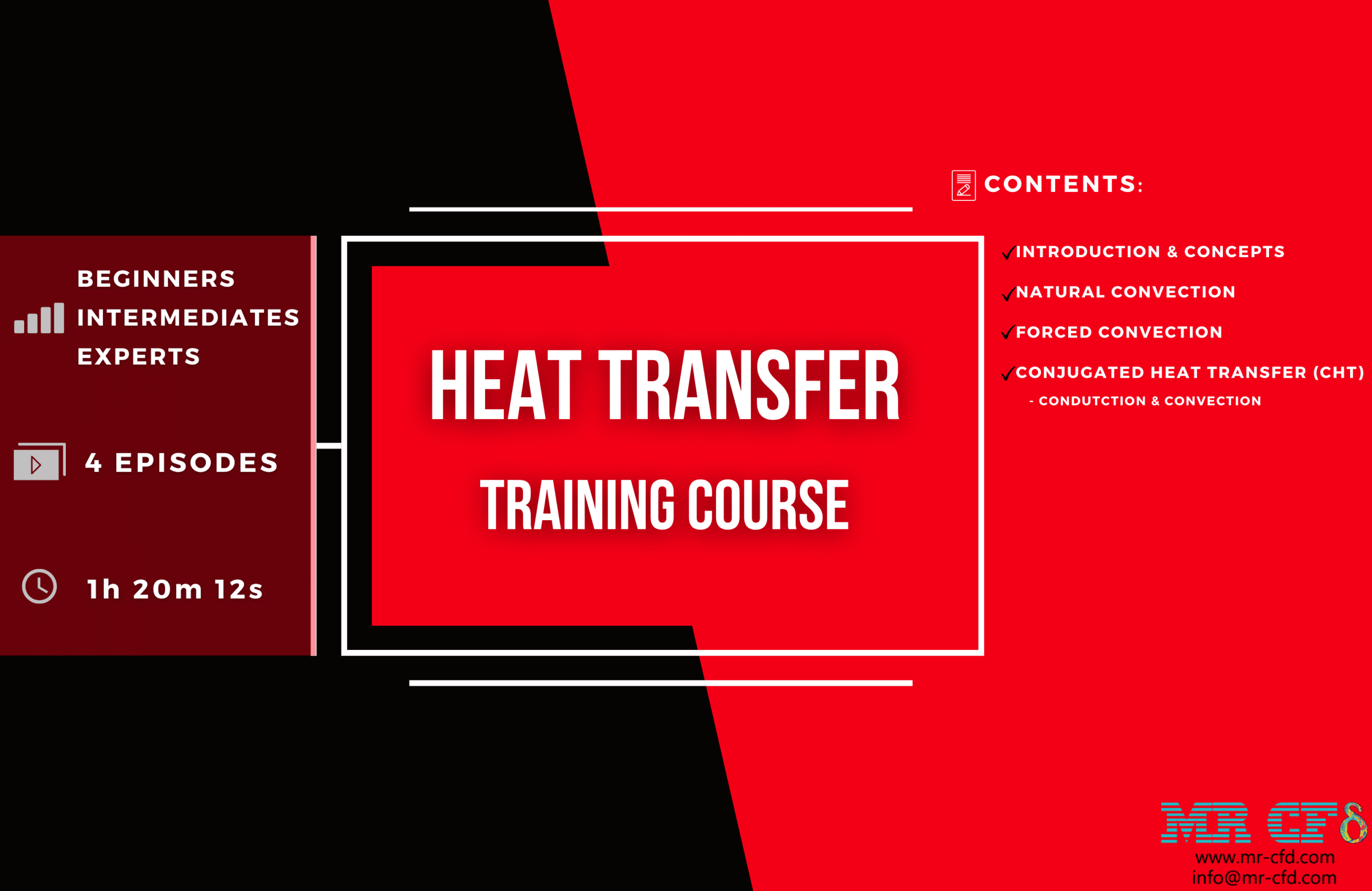
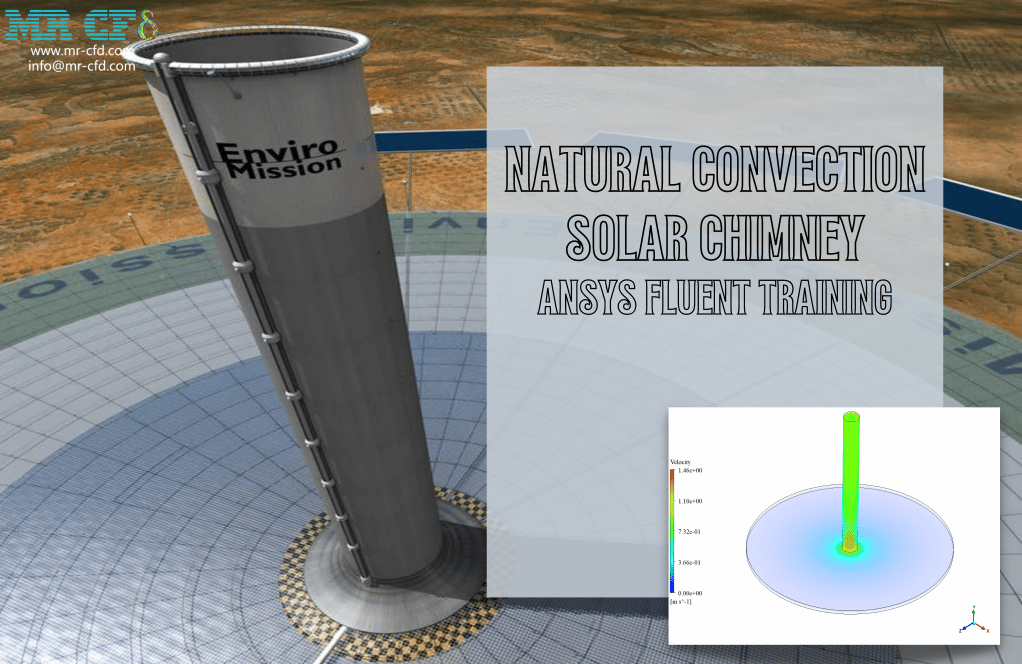

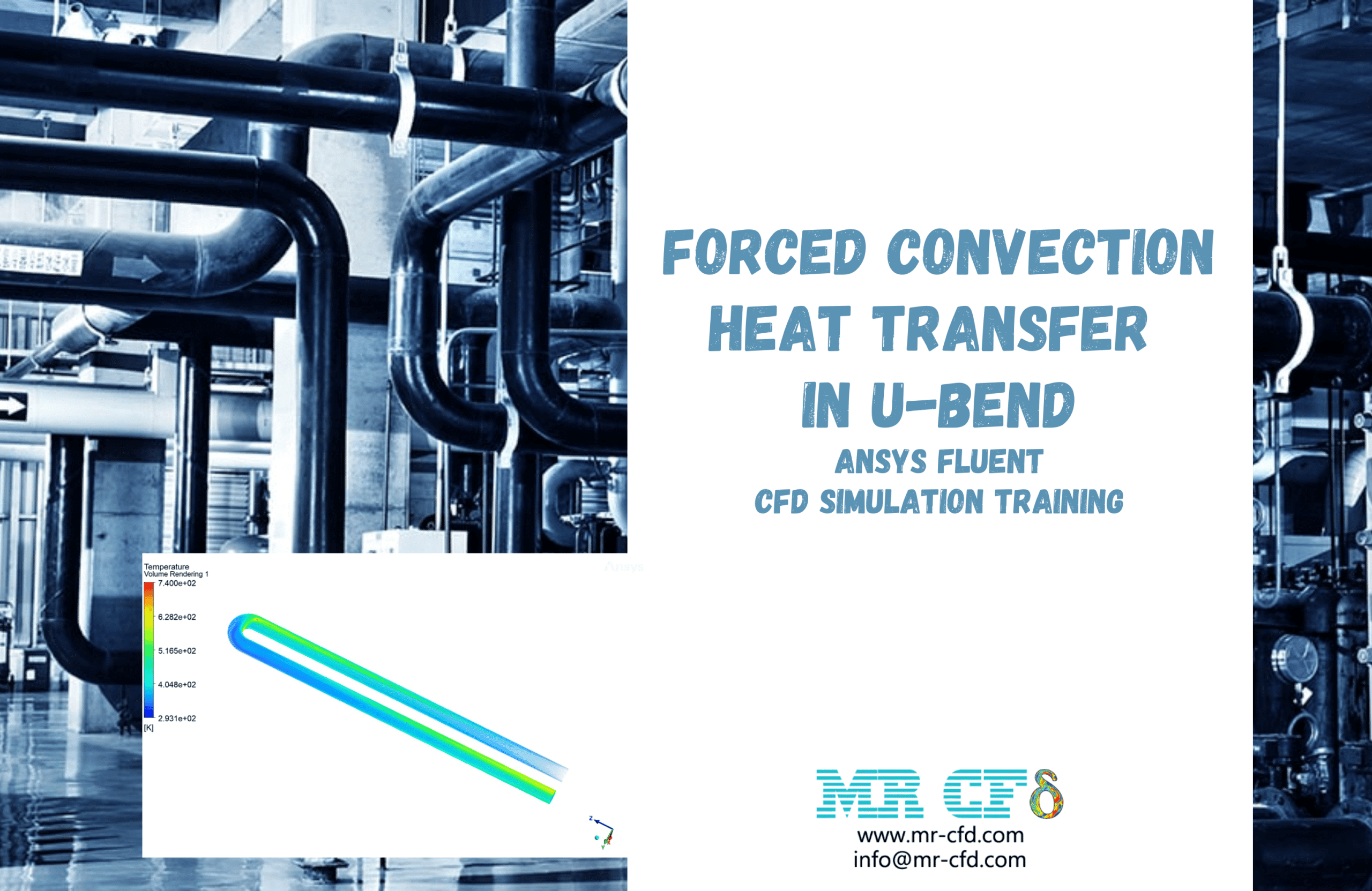
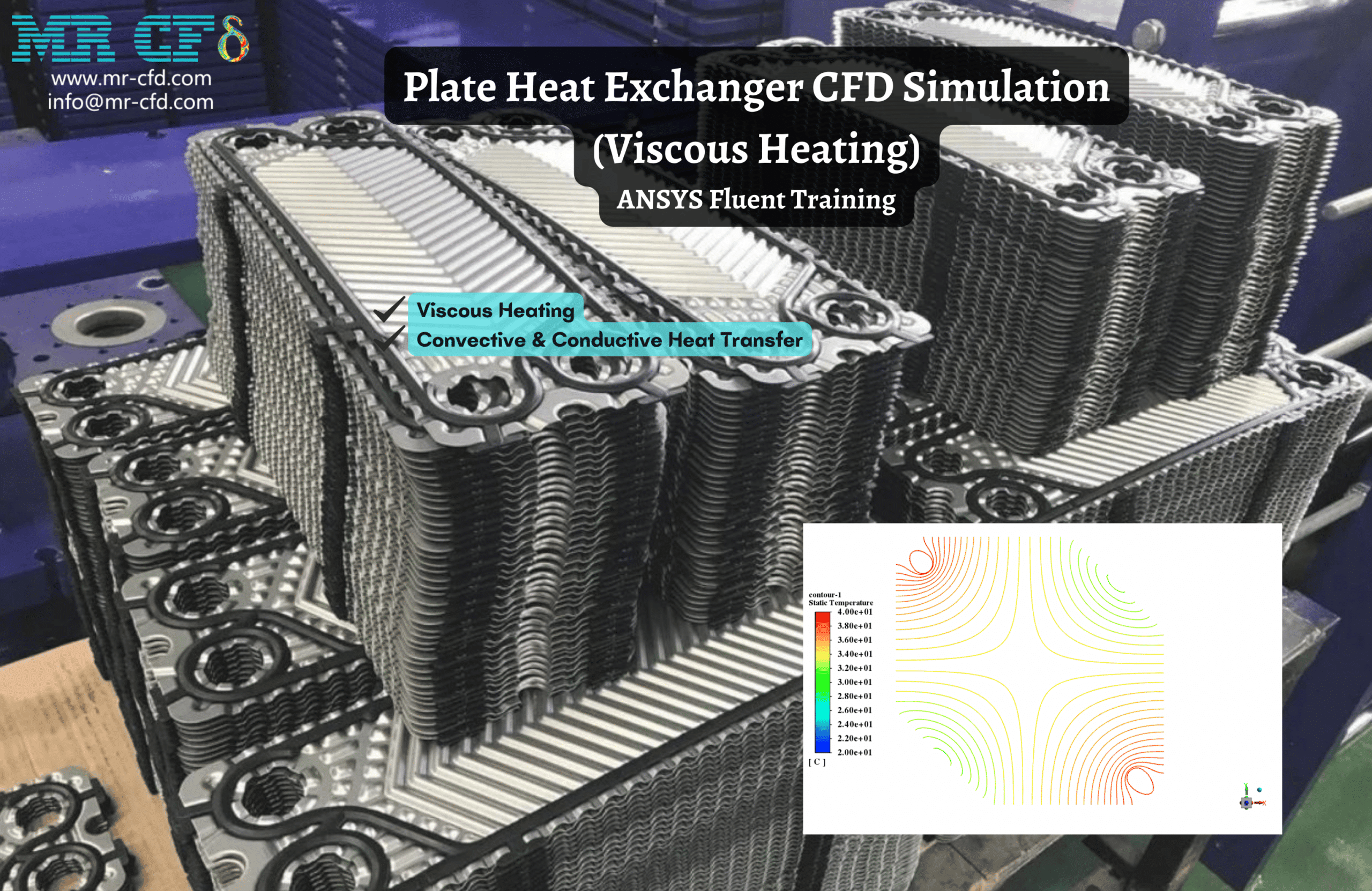
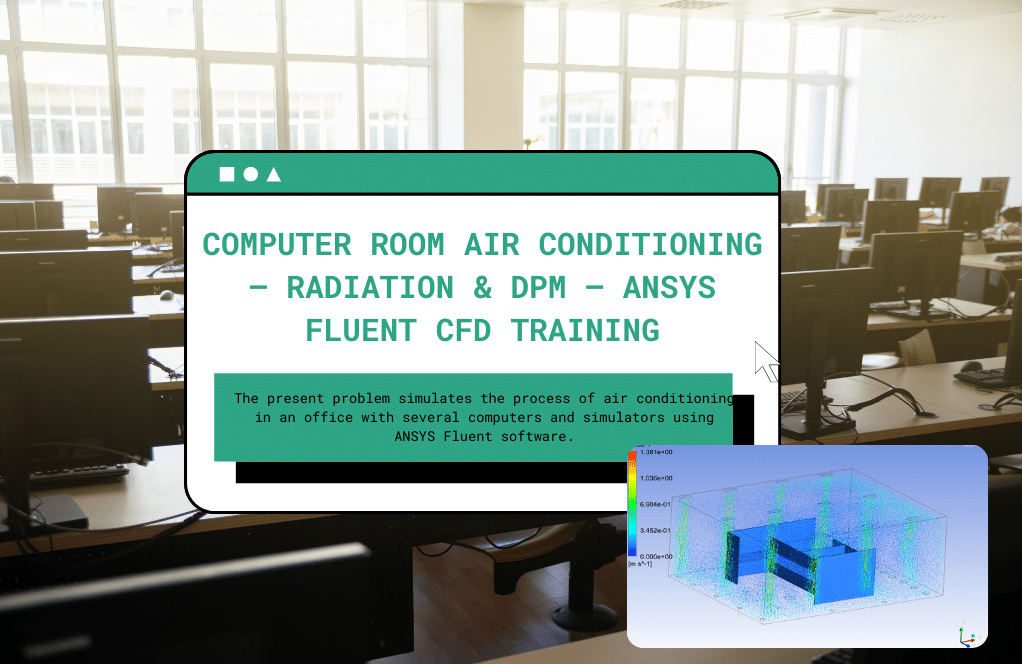
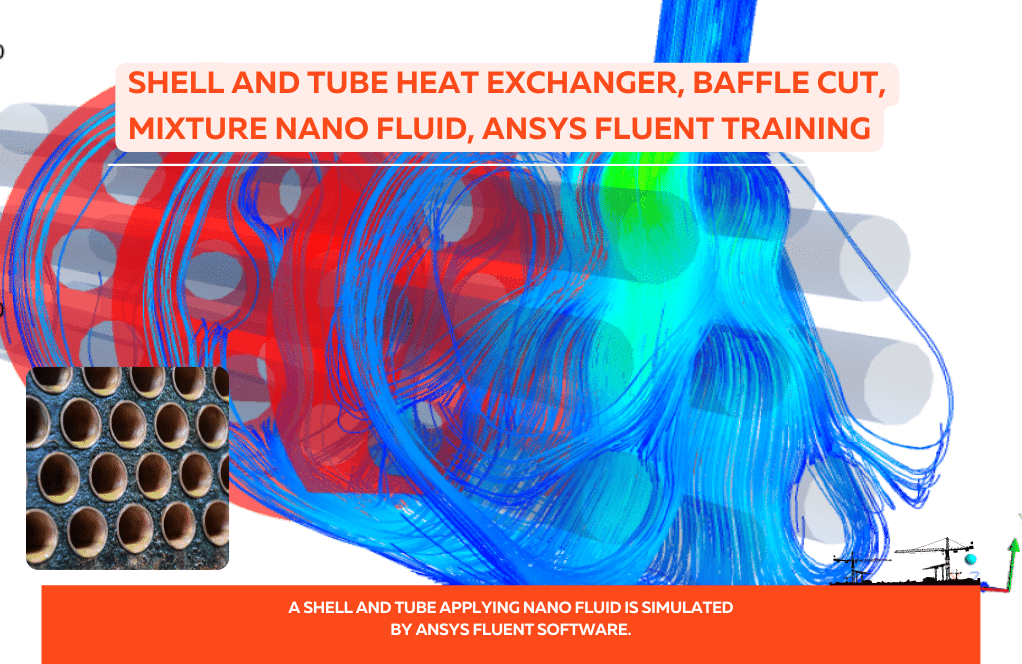

Chloe Stiedemann –
The ‘Heat Transfer Training Course by ANSYS Fluent’ is incredibly comprehensive and practical! I’ve gained a strong grasp of natural convection, forced convection, and conduction. The arrangement of lessons with hands-on examples like the solar chimney and U-bend simulation provides a solid understanding and makes complex concepts easier to digest. Completing the final project and earning the certification was truly a satisfying experience!
MR CFD Support –
Thank you for your kind words! We’re glad to hear our Heat Transfer Training Course has provided comprehensive insights into the world of CFD simulation for you to confidently apply your skills in heat transfer problems. Congratulations on attaining your certification. We’re always here to support your ongoing learning journey!
May Emmerich –
After passing this Heat Transfer Training Course, I feel confident in my abilities as a CFD Simulation expert. The clear and structured lessons have given me a strong understanding of the different aspects of heat transfer simulations in ANSYS Fluent, and I particularly enjoyed the practical approach of this course. The projects were engaging and have given me hands-on experience that I feel will be very beneficial for my future work.
MR CFD Support –
Thank you for your positive review! We are glad to hear that the course structure and hands-on projects provided you with a solid understanding and practical experience in heat transfer simulations with ANSYS Fluent. Your confidence as a CFD Simulation expert is precisely what we aim to achieve with our trainees. Feel free to reach out if you need further expertise or assistance in advanced simulations.
Nicholas Feest –
I recently completed the Heat Transfer Training Course and found the balance of theory and practical simulation projects to be incredibly beneficial. The content was laid out logically, making it easy to follow and the final project was a great way to solidify my understanding. I really feel like I’ve achieved expertise in Heat Transfer CFD Simulation, thanks to this course!
MR CFD Support –
We’re thrilled to hear that you found our Heat Transfer Training Course to be informative and beneficial. Thank you for recognizing the structure and practicality of our course material. Congratulations on completing the final project and on your progress in mastering Heat Transfer CFD Simulation! We look forward to providing you with more valuable learning experiences in the future.
Mr. Cordell Murphy –
I recently finished the Heat Transfer Training Course, and the lessons were incredibly enlightening. Specifically, the project-based approach gave me a practical understanding of convection, radiation, and conduction simulations. The lesson on conjugated heat transfer in plate heat exchangers truly helped me grasp the complexities of different algorithms and their convergence. Kudos to MR CFD for such an in-depth and hands-on course!
MR CFD Support –
Thank you so much for your positive feedback! We are delighted to hear that our Heat Transfer Training Course met your expectations and provided you with a solid understanding of thermal simulations in ANSYS Fluent. It’s great to know that the practical projects and in-depth lessons were particularly helpful for your learning. We appreciate you choosing MR CFD Company for your learning journey, and we’re here if you need any further assistance in the future!
Larissa Bruen –
What a fantastic training course! The depth and range of content are precisely what any aspiring Heat Transfer CFD Simulation expert needs. The structure is clear, and the practical exercises sound like they’d solidify learning effectively. Well done to all involved in creating this!
MR CFD Support –
Thank you for your kind words! We are delighted to hear that our Heat Transfer Training Course met your expectations and gave you a comprehensive learning experience. Your feedback is much appreciated, and we hope you’ll find the course useful in your future simulations. If there’s anything else we can help you with, please let us know.
Dr. Turner Sipes –
This Heat Transfer Training Course by ANSYS Fluent sounds incredibly informative. As someone who was interested in learning the practical applications of heat transfer mechanics in different systems, I found the course content to be deeply engaging and enriching. It helped me build a solid foundation in theory, which was very well complemented by hands-on projects that solidified my understanding. The division of the course into lessons on natural convection, forced convection, and conduction provided a systematic approach to mastering heat transfer simulations in ANSYS Fluent. The final project was also a great chance to apply everything I learned in a comprehensive exam!
MR CFD Support –
We’re delighted to hear that you enjoyed the Heat Transfer Training Course and found it to be both informative and practical. It’s fantastic to know that the course content contributed meaningfully to your understanding of heat transfer simulations in ANSYS Fluent. Thank you for taking the time to share your positive experience. Your grasp of the material speaks highly of your dedication, and we hope you find great success in applying these skills in your future projects. If you have any further questions or need more assistance, please don’t hesitate to reach out. Keep learning and experimenting with confidence!